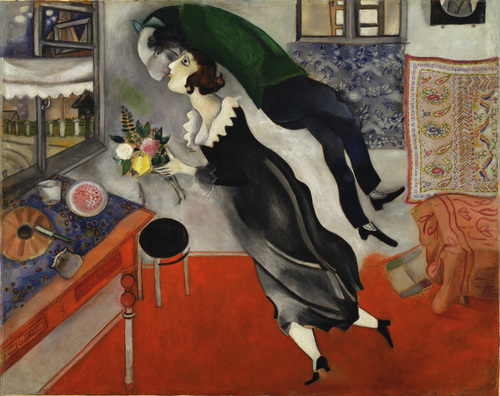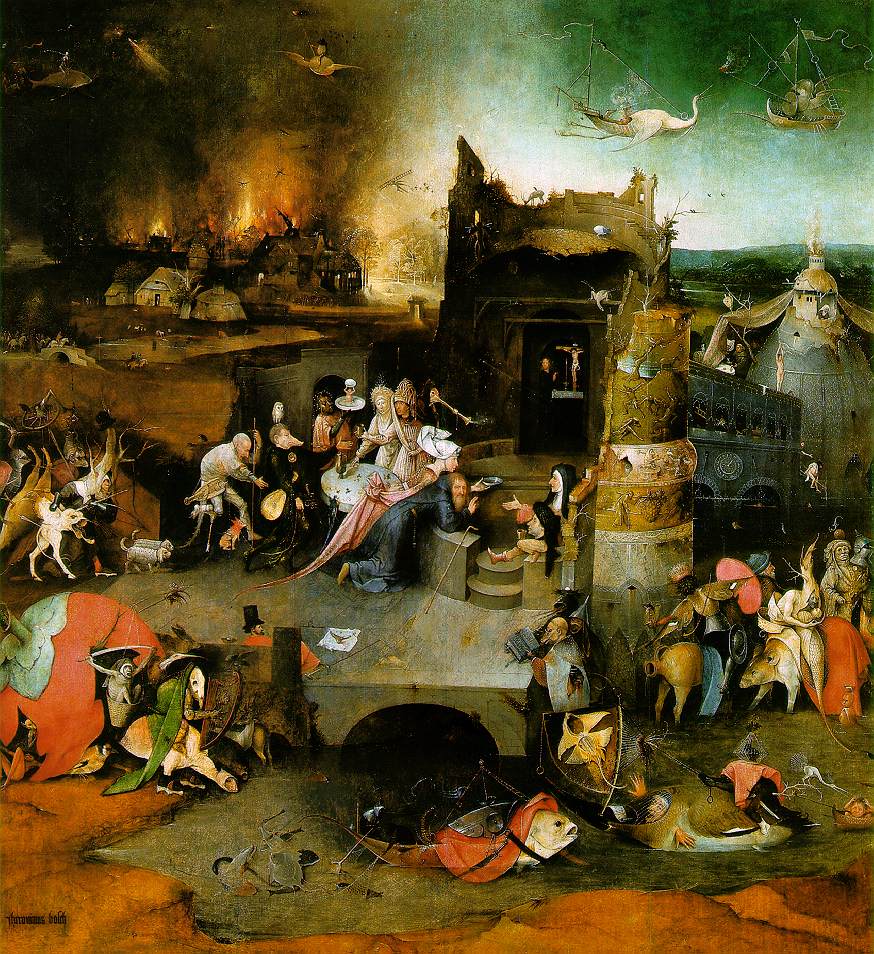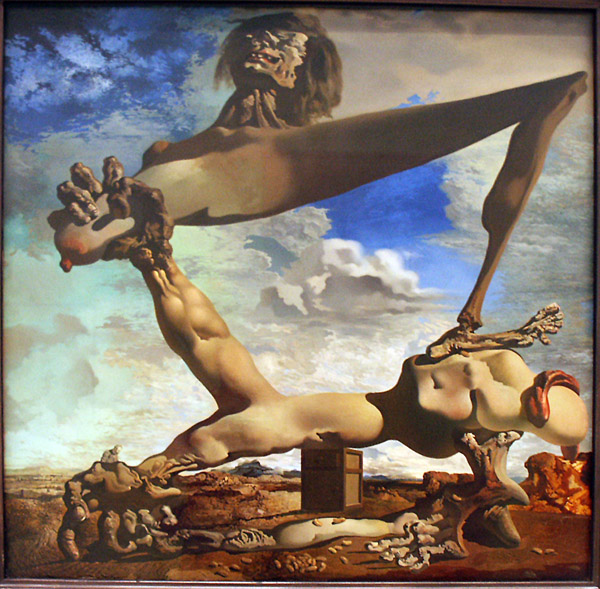An evolving sense of the devil. In the world of Hieronymous Bosch, synonymous with Northern Renaissance painting where in spite of joys and diversions the known world, the worldview is permeated with tragedy, malevolence and the mysterious. But leaping from Bosch into the twentieth century where the irrational laws and Biblical prophecies are now subsumed Freudian theory and the surreal which essentially operates in much the same way.

—Marc Chagall (French, born Belarus. 1887–1985)
Birthday
Date:
1915
Medium:
Oil on cardboard
Dimensions:
31 3/4 x 39 1/4″ (80.6 x 99.7 cm)
Credit Line:
Acquired through the Lillie P. Bliss Bequest—source: MOMA
Sinful hallucinations that invade a desert hermit like Saint Anthony are just the nightmare world of everyone in the modern context. The agonized creatures of a Salvador Dali in Soft Construction with Boiled Beans are just more curious and eccentric relatives of Bosch experiencing the same nightmare.

— Bosch was preoccupied with themes of torment and the sinfulness of man, which replaced earlier, more optimistic visions of Christ and the Virgin with feelings of anxiety, fear, and guilt. His sources for such unusual images were the dark corners of the medieval imagination, the gargoyles and monsters of cathedral decoration, and the marginal illustrations of books and popular prints.
In Bosch’s day, temptation not only had the meaning it has today, but also meant physical/mental assault by demons. So St Anthony is not only tempted by the pleasures of the flesh and so on, he is also beaten up and terrorized by the demons. —click image for source…
Of course, with surrealism, the demonstrations of technical dexterity hold more than a suspicion of exhibitionism and this flaw in surrealism constitutes the difference between a supposed visionary nature and that of someone really on the edge like Bosch. The conspicuous zaniness of surrealism and its synthesis of forms both arbitrary and tricky, the focus on the sensationalism and shock, cannot compare in intensity with Bosch’s purposeful combinations that steers clear of novelties and publicity stunts, though to be fair, within the context of Bosch there was no such entity as a purely personal response to isolated and specialized fragments of social experience.
What is paradoxical is that the fantastical art of the twentieth century took place in an age that made a fetish of science yet painters like Chagall and Dali were varied and prolific in exploring the world of pure imagination than any other period since the Middle Ages, when the other world was a part of daily life. Call it a form of escapism and just plain satisfaction and delight in leaving the world for excursions into one of pure invention.








 COMMENTS
COMMENTS